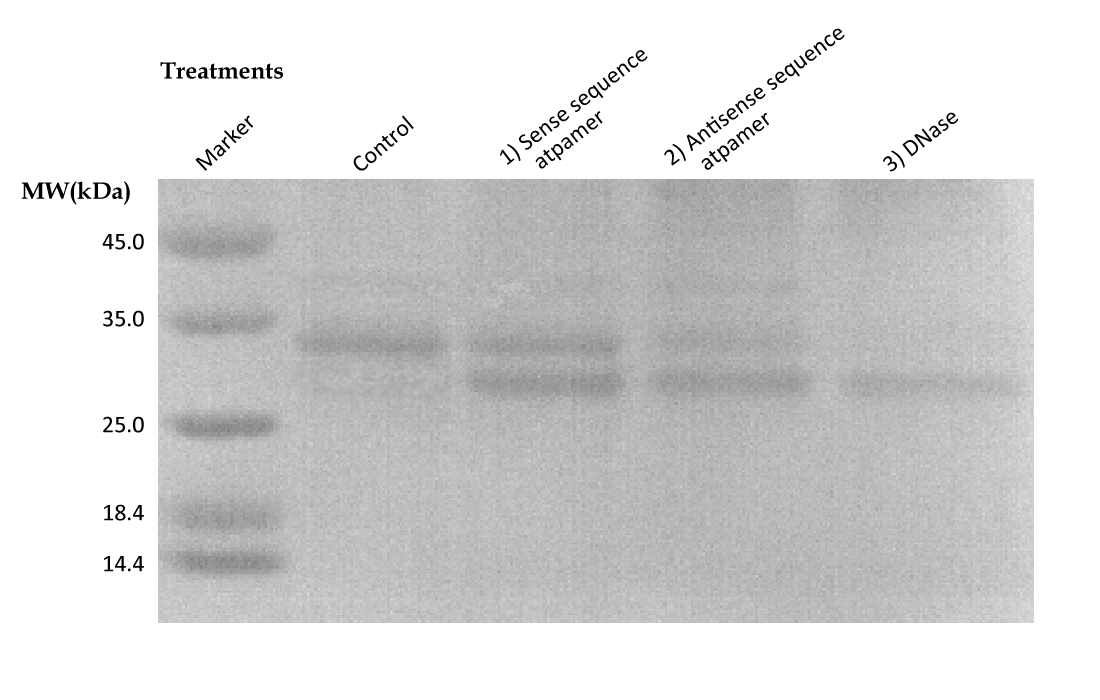Team:ZJU-China/Project/TheGhostKit/GhostSponge
From 2013.igem.org
Contents |
The Ghost Kit: Ghost Sponge
Background
Previously described methods concerning protein purification are of great diversity. However, few of them are designed as non-denaturing ones that only allow limited characterization of a distinct protein, as its activity is undermined and thus in need of an alternative method to detect.
Here we build a device on the basis of a fantastic combination of bacterial ghost and aptamer. The incredible chemistry between these two elements enables a high-efficacy non-denaturing purification and therefore greatly revolutionizes the protein purification methodology. It’s pretty handy, with the protein activity maximized. It’s definitely a COOL design. We call it "Ghost sponge".
Our device includes the following components – bacterial ghost, inner membrane scaffolds, biotinylated aptamers and our protein of interest – thrombin. Our previous experiments prove that:
- Scaffolds we build are powerful enough to be localized upon the inner membrane.
- Thrombin aptamer we use are of high efficiency.
Naturally we come to sound out the possibility of applying these amazing features into protein purification, if its high-affinity aptamers are available. Bacterial ghost has no cell content – a great characteristic for us as the disturbance in purification is partially erased. Nontheless, what we get is not solely a protein molecule, but a protein-aptamer complex. How we get rid of the unwanted aptamer becomes a trouble we are about to shoot.
Preliminarily, we come up with three approaches:
- By adding the identical nucleotide sequence as aptamer to expel the protein into the solution through competitive binding;
- By adding the complementary nucleotide sequence as aptamer to expel the protein into the solution through competitive binding;
- By adding DNase to digest the aptamer.
Of all these three, the first method possesses another advantage – it's recyclable.If we heat the sample at 50℃ for 2 minutes to dissociate the protein-aptamer complex without significantly compromise the scaffolds we construct.
Experimental design
Non-denaturing trait
- Sponge assembly: Mix 20ul bacterial ghost, 10ul biotinylated aptamer, 20ul thrombin and 50ul 2* PBS buffer, 37℃ for 30min. Pull down by 8000 rpm, 1 min. Wash 3 times with 200ul PBS. During the last wash, save 20ul supernatant as Control. Re-suspend the sample with 480ul PBS buffer after the last wash;
- Expel thrombin into solution: Prepare 3 EP tubes and add 160ul Sponge (from the first step) to each. Add 10ul sense DNA aptamer, antisense DNA aptamer and DNase respectively, 37℃ for 30min;
- Test thrombin activity: Co-incubate 20 ul previous sample with 20ul GST-tagged protein containing a cleavage site, add 40ul cleavage buffer and incubate at 37℃ for 60min. Denature the sample. Run the gel and do Coomassie Blue Staining.
Recyclable trait
- After pull down, wash 3 times with PBS;
- Expel thrombin into solution using sense DNA aptamer;
- Wash 3 times with PBS;
- Heat at 50℃ for 2 min to disassociate remaining aptamer-thrombin complex;
- Centrifuge to harvest the resultant products;
- Do “Non-denaturing trait” section experiment.
Results
Lane 1 shows a ladder denoting protein mass weight; lane 2 is loaded with control sample; lane 3-5 are respectively loaded with samples treated by method 1), 2) and 3). Thrombin helps cleave our loaded protein into a 5 kD and its 27 kD GST tag. Among all 3 methods, 3) is the most efficient one. The putative problem of DNase contamination is proved not a key problem if the purity is not stringently demanded, as the amount of DNase we used is negligibly small.
Discussions
Although our method is aptamer-dependent, we totally believe that with the development of SELEX and other up-and-coming aptamer-screening methods, the novel purification method may serve as a powerful tool to study proteins with their activity remains.
Our device owns the following amazing features:
- As aptamers are either DNA or RNA, they won’t interfere with protein of interest in gel analysis. Conversely, traditional antibodies may contribute to protein background and induce troubles in subsequent analysis.
- The non-denaturing procedure significantly reserves protein activity by which the further study of endogenous proteins is enabled.
- Although purification by virtue of aptamers is developed, its dependence on beads is a major problem in application. Our bead-free system release lab workers out of the dilemma of whether to buy beads.
- The protocol is really handy and the product has a long shelf life.
 "
"









